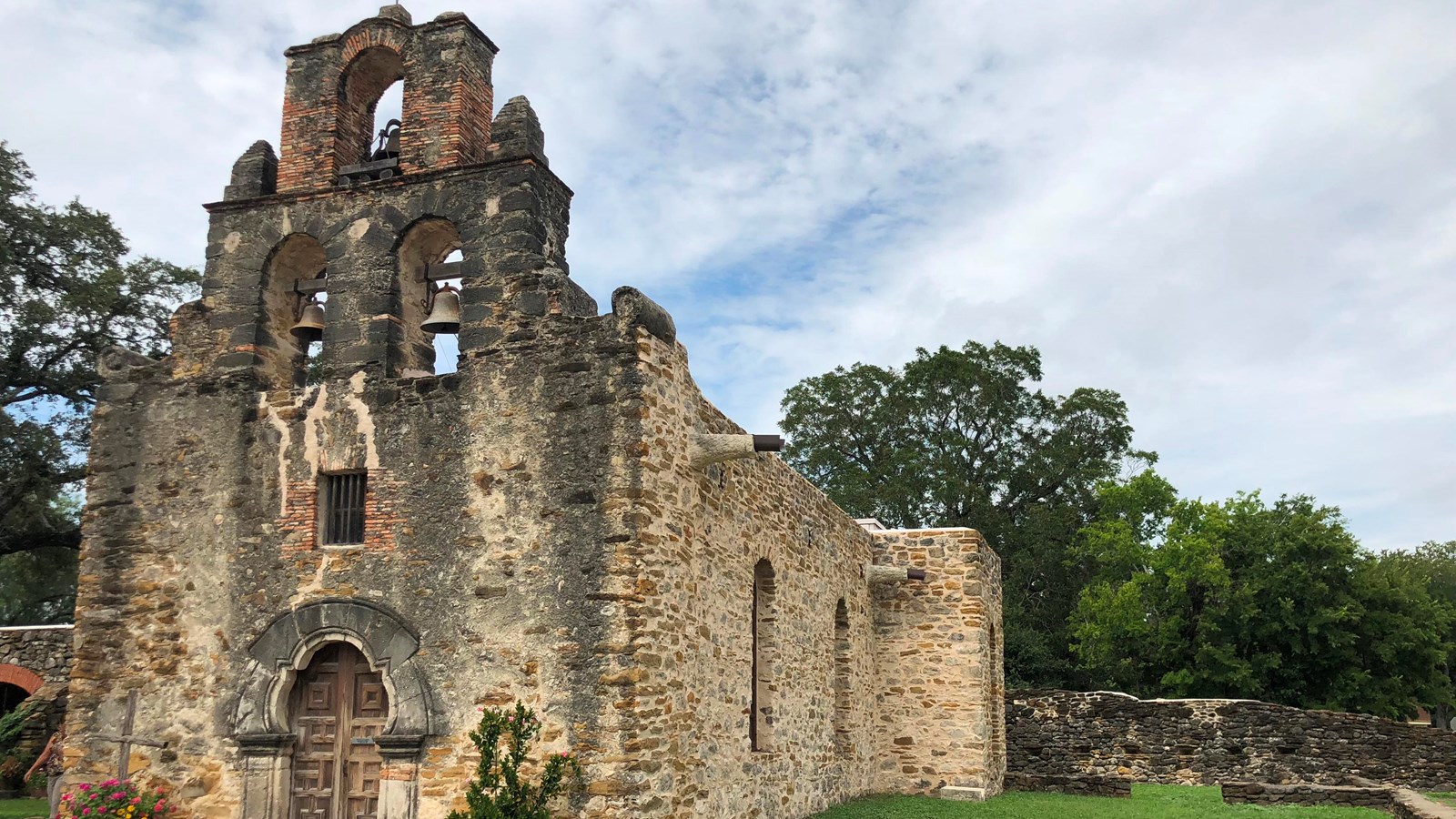Last updated: May 28, 2025
Place
Mission Espada

NPS Photo
Accessible Rooms, Accessible Sites, Benches/Seating, Bicycle - Rental, Bus/Shuttle Stop, Cellular Signal, First Aid Kit Available, Historical/Interpretive Information/Exhibits, Information, Information - Maps Available, Information - Ranger/Staff Member Present, Parking - Auto, Pets Allowed, Public Transit, Recycling, Restroom, Restroom - Accessible, Toilet - Flush, Trash/Litter Receptacles, Water - Bottle-Filling Station, Water - Drinking/Potable, Wheelchair Accessible, Wheelchairs Available
Mission Espada was the first mission in the province of Texas, founded in 1690 as San Francisco de los Tejas. In 1731, the mission was relocated from east Texas to the present location along the San Antonio River and renamed Mission San Francisco de la Espada. Mission Espada is the southern most mission in San Antonio. Visitors can walk the mission grounds, visit the church and park museum. Learn more about Mission Espada here.
Mission Espada is part of the World Heritage Site. To check out the audio tour visit: Espada Audio Tour (worldheritagesa.com)
Explore the Missions
San Francisco de los Tejas was founded in 1690 by Franciscan Father Damian Massanet near Weches, Texas and abondoned in 1693 after epidemics and after the Spanish learned of plot by the Tejas to massacre the missionaries. This mission was relocated to San Antonio in 1731 after several failed attempts at other locations in the province of Texas.
The mission was renamed San Francisco de la Espada. La Espada means sword in Spanish and is believed to be the surname of a distinguished person. The mission started from scratch, recruiting indigenous groups, and collecting supplies.
The sacristy, granary, and two-story convento were completed in 1745. The first and current stone church was completed by 1756. The mission was partially secularized in 1794 and fully secularized by Mexico in 1824.
Acequias: The Lifeblood of the Missions
During the first years of the missions, the indigenous people under the instruction of the craftsman would’ve began construction on the dam, dug the earthen acequias, cleared land for farming, and built temporary structures. The acequia construction began around 1731 and was completed by 1745. The acequias water has been flowing ever since. Walk around outside the mission walls and you can see parts of the Espada acequia.
Bicycle Information
Please walk bikes on sidewalks inside the missions.
The bike rack is located near the entrance of the hike and bike trail northwest of the mission. The San Antonio Bike Share docking station is located along the hike and bike trail northwest of the mission.
